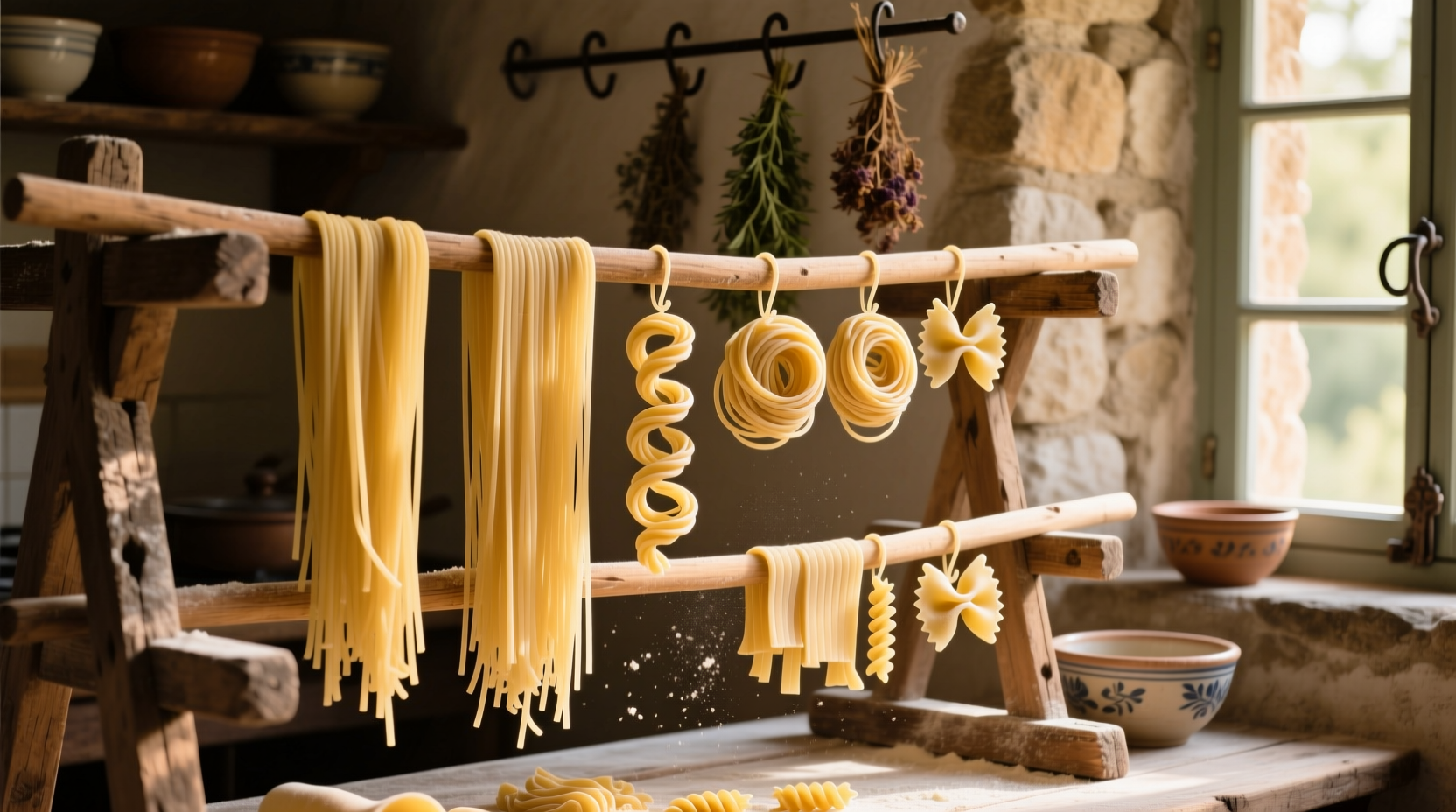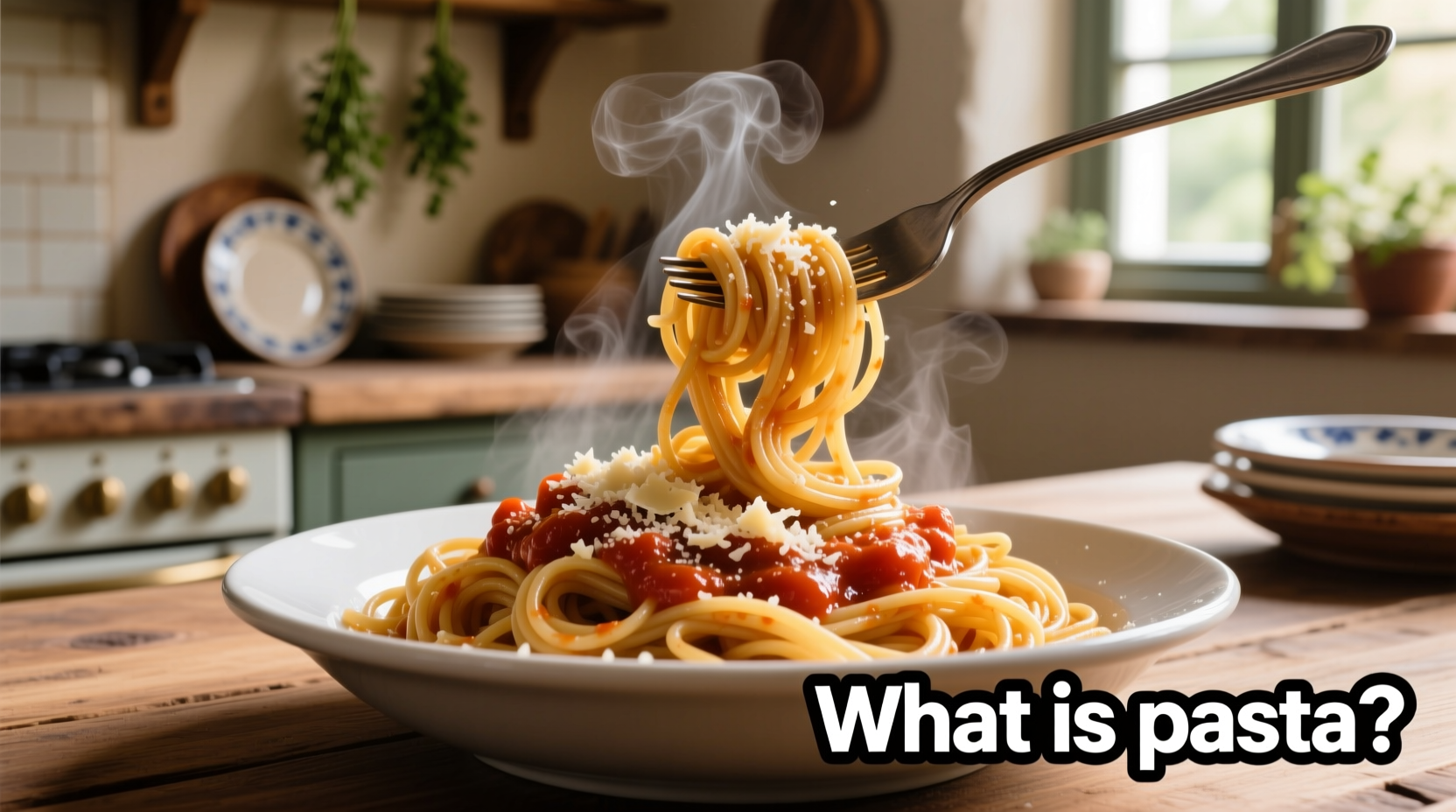When you ask what food is pasta, you're exploring one of humanity's most enduring culinary innovations. This guide cuts through common misconceptions to deliver precise, authoritative information about pasta's composition, history, and cultural significance - helping you understand why this simple food has nourished civilizations for millennia.
The Essential Definition: What Exactly Is Pasta?
At its core, pasta consists of just two fundamental ingredients: durum wheat semolina and water. Some varieties incorporate eggs for richer texture and flavor, particularly in northern Italian traditions. The magic happens through the gluten development during kneading, which gives pasta its distinctive chewy texture when cooked properly.
The European Union legally defines authentic pasta through Commission Regulation (EC) No 1107/96, specifying that "pasta" must contain durum wheat semolina. This distinguishes true pasta from similar grain-based dishes found globally that use alternative flours like rice or buckwheat.

Pasta vs. Similar Grain-Based Dishes: Understanding the Differences
| Food Type | Primary Ingredients | Origin | Distinctive Characteristics |
|---|---|---|---|
| Traditional Pasta | Durum wheat semolina, water | Mediterranean | High gluten content, boiled preparation, diverse shapes |
| Asian Noodles | Rice, wheat, or starches (mung bean, sweet potato) | East/Southeast Asia | Variety of cooking methods (stir-fry, soup), different texture profiles |
| Couscous | Steamed semolina granules | North Africa | Granular texture, traditionally hand-rolled, served as side dish |
| Polenta | Cornmeal | Italy | Served soft or cooled and sliced, porridge-like consistency |
Historical Evolution: How Pasta Became a Global Staple
Contrary to popular myth, pasta didn't originate with Marco Polo's travels to China. Archaeological evidence shows ancient Etruscans were making pasta-like foods as early as the 4th century BCE. The timeline of pasta's development reveals fascinating cultural exchanges:
- 4th century BCE: Etruscan tomb paintings depict pasta-making tools
- 1st century CE: Roman writer Cicero references "lagana," early flat pasta sheets
- 9th century CE: Arab traders introduce dried pasta to Sicily, enabling long-term storage
- 13th century: First documented "macaroni" production in Italy
- 19th century: Industrial pasta production begins, making it accessible worldwide
The Food and Agriculture Organization (FAO) of the United Nations confirms pasta's ancient Mediterranean roots through archaeological findings at sites like the Etruscan necropolis of Cerveteri, where pasta-making implements have been unearthed (FAO Historical Food Documentation).
Understanding Pasta's Nutritional Profile
As a carbohydrate-rich food, pasta provides sustained energy release when prepared properly. The nutritional composition varies by type:
- Traditional durum wheat pasta: 75g carbohydrates, 13g protein, 2.5g fiber per 100g dry weight (USDA FoodData Central)
- Whole grain pasta: Higher fiber content (6-7g per serving) with more vitamins and minerals
- Legume-based pasta: Increased protein (20-25g per serving) for plant-based diets
Nutrition experts from Harvard T.H. Chan School of Public Health emphasize that pasta's glycemic impact depends significantly on cooking method - al dente pasta has a lower glycemic index than overcooked varieties, making it suitable for balanced diets when paired with vegetables and lean proteins (Harvard Nutrition Source).
Global Variations and Cultural Significance
While Italy claims pasta as a national treasure, this versatile food has been adapted across cultures:
- Italy: Strict regional variations - egg pasta in the north, tomato-based sauces in the south
- United States: Evolution into comfort food classics like macaroni and cheese
- Argentina: Incorporation of Italian traditions with local ingredients like dulce de leche in dessert pastries
- Japan: Unique adaptations like mentaiko (spicy cod roe) pasta
The International Pasta Organization reports that global pasta consumption reached 15 million tons in 2023, with Italy leading at 23kg per capita annually - demonstrating its enduring appeal across diverse culinary traditions (International Pasta Organization).
Practical Guidance for Pasta Selection and Preparation
Understanding what food is pasta helps you make informed choices:
- Reading labels: Authentic pasta lists only "durum wheat semolina" and "water" as ingredients
- Cooking technique: Use 4-6 quarts of well-salted water per pound of pasta for proper hydration
- Sauce pairing: Match sauce weight to pasta shape - delicate sauces with fine strands, robust sauces with textured shapes
- Storage: Dried pasta keeps for 2 years in airtight containers; fresh pasta lasts 2-3 days refrigerated
Chef Massimo Bottura, owner of Osteria Francescana (three Michelin stars), emphasizes that proper pasta preparation respects the ingredient's integrity: "The perfect pasta maintains its structural integrity while absorbing flavors - never soggy, always with purpose" (Barilla Academy Culinary Research).
Frequently Asked Questions
Is pasta considered a carbohydrate or protein food?
Pasta is primarily a carbohydrate food, with durum wheat providing approximately 75% carbohydrates by dry weight. It also contains significant protein (about 13%), making it a complete protein source when paired with legumes.
What makes pasta different from other noodles?
Traditional pasta uses durum wheat semolina which has higher protein and gluten content than many noodle varieties. Authentic Italian pasta follows specific production methods and ingredient standards that distinguish it from Asian noodles made from rice, mung bean, or other starches.
Can pasta be part of a healthy diet?
Yes, pasta can be part of a healthy diet when consumed in appropriate portions and prepared properly. Whole grain and legume-based pastas offer enhanced nutritional profiles. Research published in Frontiers in Nutrition shows that pasta consumption as part of a Mediterranean diet pattern correlates with better metabolic health outcomes.
Why is durum wheat specifically used for pasta production?
Durum wheat contains 12-15% protein with unique gluten properties that create the firm, elastic dough required for pasta extrusion. Its high carotenoid content gives pasta its characteristic golden color, and its hardness allows for proper texture development during cooking.











 浙公网安备
33010002000092号
浙公网安备
33010002000092号 浙B2-20120091-4
浙B2-20120091-4